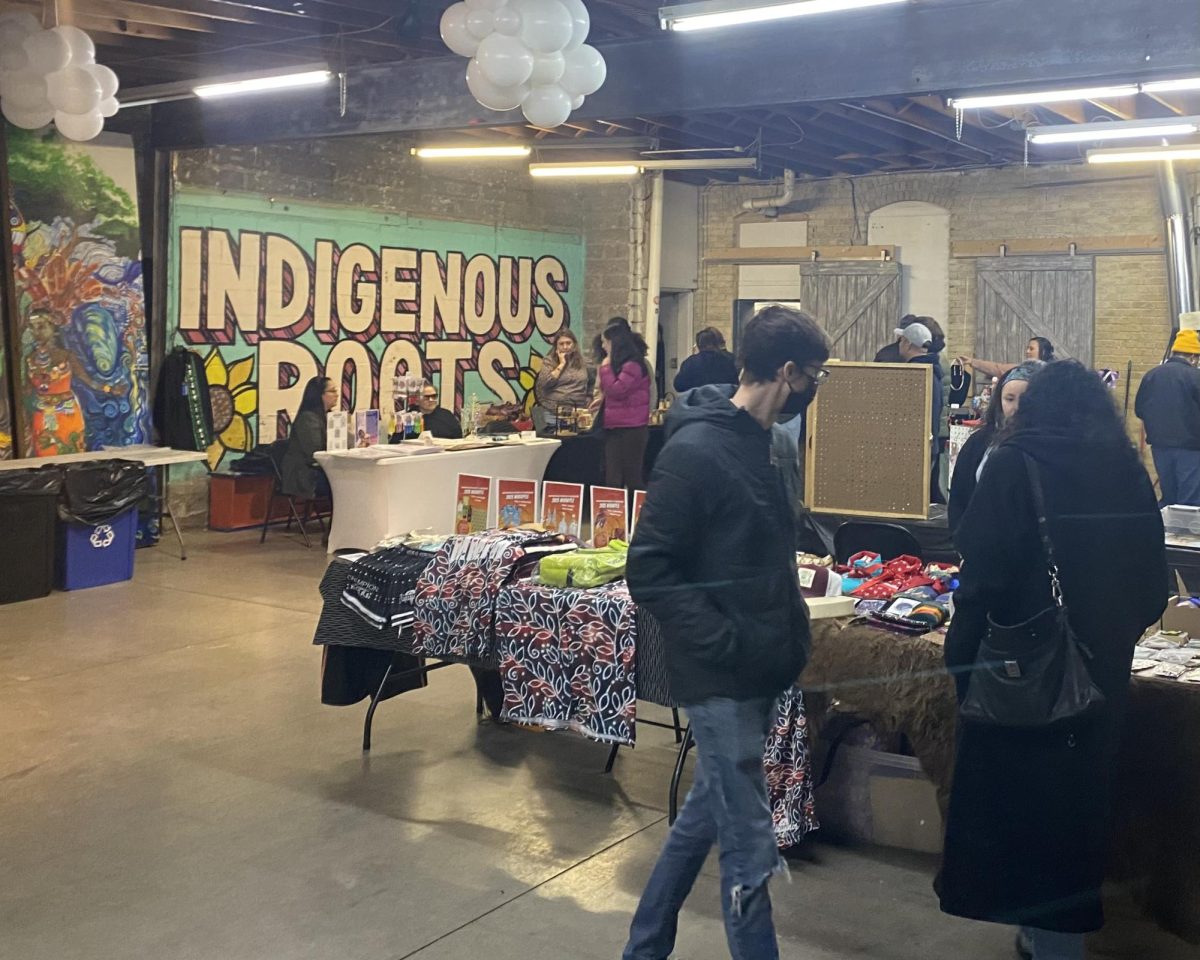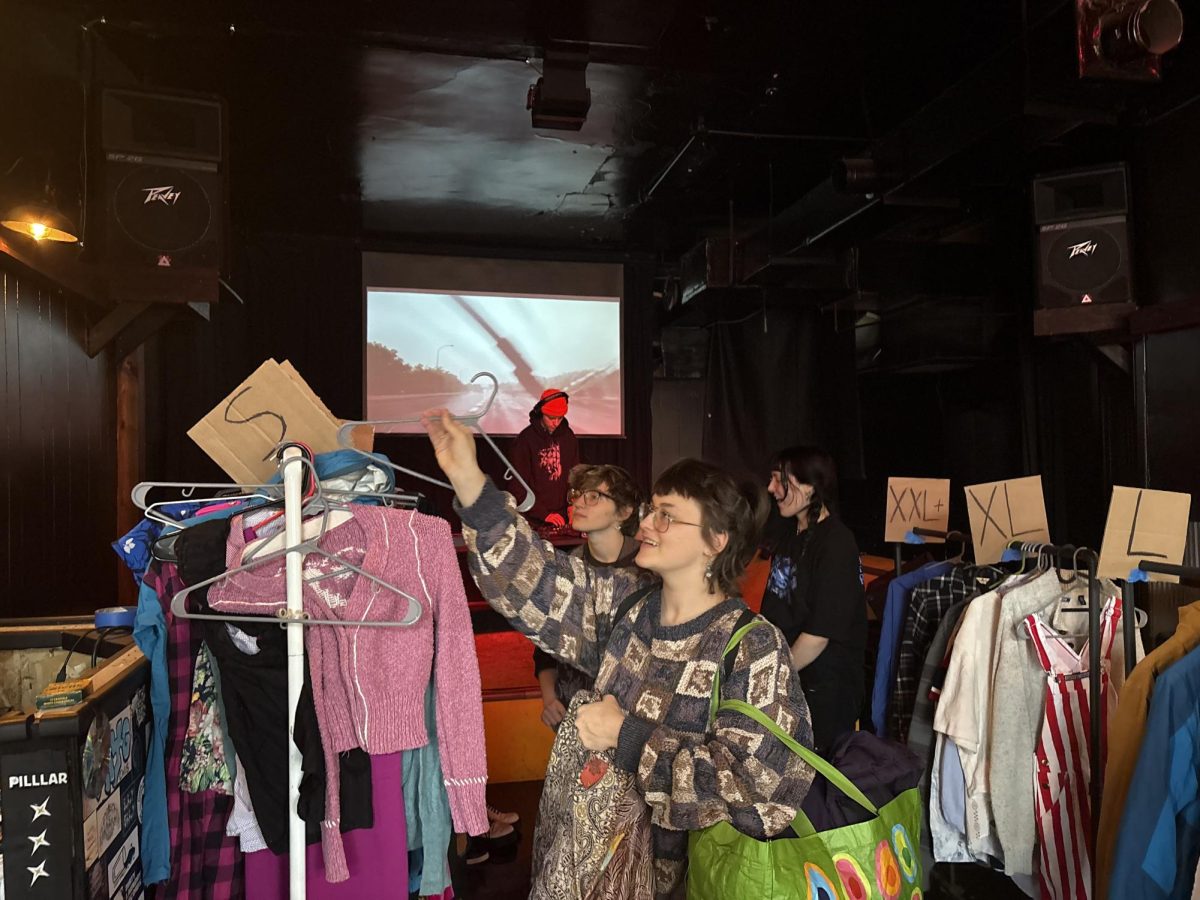Hiccuped calls of “you” echoed through the dark performance space on Thursday as four dancers wandered the length of the stage. Clad in black flowing clothes, they lurked in dark corridors next to the audience.
The dancers’ calls varied from short staccato-ed yelps to low soulful yowls as they shuttered, whispered and jolted to low waves of static.
“What Remains” was performed at the Walker Art Center this weekend, following appearances in New York, Chicago and New Haven.
A collaboration between renowned poet Claudia Rankine, choreographer Will Rawls and filmmaker John Lucas, “What Remains” calls its audiences to join the four dancers in a void space that sacrifices lucidity and cohesion, making a point about the surveillance of black bodies in America.
“[There are] practices for making your body and voice appear in this space in ways that are unexpected or grotesque,” said Tara Aisha Willis, one of the dancers in “What Remains.” “What can you accomplish when you actually lean into the other possibilities for your body and your voice that don’t kind of follow that linear trajectory [the audience expects]?”
Throughout the show, performers babble nonsensical words, play with a microphone set to a high-pitched frequency and drag a massive disco ball on the ground so it sends light bouncing in circles on the walls.
The piece doesn’t appear to have a consecutive beginning-middle-end. Dancers who lucidly recite poems eventually dissolve back into the garbled speaking and jumbled body movements of the show’s opening.
Audience members drawn to the performance by the lure of a dancing-poetic experience or admiration for the big-name creators on the playbill may have been uncomfortable, not knowing exactly what they were viewing or how it should make them feel.
The dancers encouraged this.
“It is a kind of a privilege … to think that you need to know everything or to think that you deserve to know everything or [that] everything should be made accessible to you,” said Jeremy Toussaint-Baptiste, a dancer and sound designer for the show. “It’s not about you.”
According to Touissaint-Baptiste, this “not-knowing” and discomfort is a sign of growth.
“[It] is so fortunate to be able to sit in something for an hour and not know what you’re seeing and actually be challenged,” he said. “And I always like to be an audience member who has to do some work.”
The depiction of black bodies changes over the course of the show, aided by costuming and lighting. Lighting equipment traditionally used in photoshoots is pointed away from the performers on stage.
Willis said this light manipulation plays into the idea of spectacle and surveillance, which is especially prevalent in her daily life.
Even as the dancers begin to act more rationally, changing into more form-fitting clothing, the audience is obscured from seeing their bodies fully.
“We become figures in the end but then the lighting is not there for you to see us,” said performer Leslie Cuyjet. “We’re people in the end, but we’re not like giving it all away either.”
For the dancers, fostering dialogue and establishing a community around movement allowed for the creation of this type of performance.
“I think it was really important to create a world for us first that spoke not only to us as a group and as individuals, but also [to] the connections between all of us,” said Cuyjet. “For most of my career, I couldn’t say that I would have been able to walk onto stage with that amount of confidence and security and safety. Because I know that’s our positioning in the work, and this is what we’re cultivating every time we do it.”








